Table of Contents
The nursing case study is a powerful tool for learning, critical thinking, and professional development. It allows students, nurses, and healthcare professionals to delve into real-life scenarios, analyze complex patient situations, and apply their knowledge to practical situations. But crafting a truly compelling and effective case study in nursing requires more than simply summarizing a patient’s medical history. It demands a nuanced understanding of the key components, a structured approach, and a focus on the intricacies of patient care.
This article explores the best strategies to write a captivating nursing case study that not only meets the academic requirements but also serves as a valuable resource for professional learning and reflection.
Defining the Purpose and Scope of a Nursing Case Study
Before embarking on the nursing case study writing journey, it’s crucial to understand the purpose and scope of your assignment. Are you aiming to:
- Analyze a specific nursing intervention? This type of nursing case study might focus on the effectiveness of a particular medication, therapy, or nursing care plan.
- Explore a unique patient experience? This could involve a rare condition, an ethical dilemma, or a patient with a complex medical history.
- Demonstrate your understanding of a particular nursing theory or concept? You can utilize the nursing case study to apply theoretical knowledge to a practical situation.
Once you’ve defined the purpose, determine the scope of your nursing case study. Will you focus on a specific period in the patient’s journey or cover their entire medical history? Will you include quantitative data, qualitative observations, or both?
Step-by-Step Guide to Writing a Compelling Nursing Case Study
Choosing the Right Patient: A Case for Compelling Content
The foundation of a successful nursing case study lies in the choice of patient. The ideal patient should:
- Represent a common or complex medical condition: This allows for broader applicability and learning opportunities.
- Present a unique challenge or dilemma: A patient facing an ethical dilemma, a difficult decision, or a rare medical complication can make for a particularly engaging nursing case study.
- Exhibit diverse and interesting patient characteristics: The patient’s age, culture, social determinants of health, and personal experiences can contribute to the richness and complexity of your nursing case study.
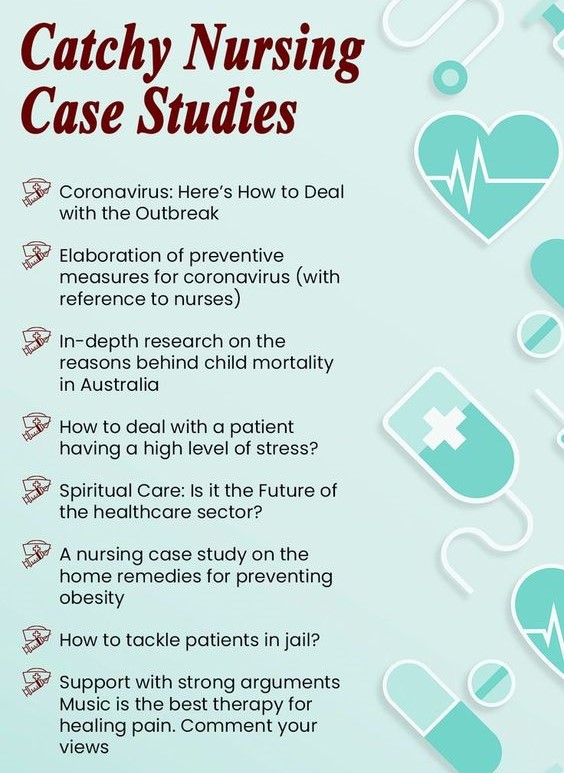
Remember, always prioritize patient confidentiality and obtain necessary permissions before using any identifiable information.
Gathering the Data: A Comprehensive Approach to Patient Information
Once you’ve chosen your patient, it’s time to gather comprehensive data. This involves:
- Medical history: Include relevant past medical history, current medications, allergies, and family history.
- Physical assessment findings: Document vital signs, physical examination findings, and any diagnostic test results.
- Social and psychological history: Explore the patient’s living situation, support system, cultural background, and psychological factors that might influence their health.
- Nursing care plan: Document the interventions implemented, patient responses, and any adjustments made to the plan.
- Patient narratives and perspectives: Gather firsthand accounts from the patient about their experiences, anxieties, and goals. This provides a valuable qualitative dimension to your nursing case study.
Crafting the Narrative: Engaging the Reader Through Storytelling
The narrative of your nursing case study should be engaging and informative. Here are some key elements to consider:
- Clear and concise writing: Use professional language, avoiding technical jargon that might confuse the reader.
- Logical organization: Structure your nursing case study using a clear and logical flow, following a chronological order or a problem-oriented approach.
- Descriptive language: Use vivid and descriptive language to bring the patient’s situation to life. Paint a picture of the patient’s experiences, the complexities of their care, and the challenges you faced.
- Focus on the patient’s journey: The nursing case study should be centered around the patient’s experience. Highlight their unique needs, fears, and aspirations.
- Balance objectivity and personal reflection: While maintaining a professional tone, incorporate your own reflections on the patient’s care, the challenges you faced, and the lessons you learned.
Incorporating Critical Thinking and Reflection: A Deeper Dive into Nursing Practice
A strong nursing case study goes beyond simply documenting facts. It requires critical thinking, analysis, and reflection.

Consider these aspects:
- Analyzing the patient’s condition: Present a thorough analysis of the patient’s medical condition, including potential complications, risk factors, and potential interventions.
- Evaluating nursing interventions: Discuss the effectiveness of the nursing interventions implemented, their impact on the patient’s outcomes, and any necessary adjustments.
- Exploring ethical considerations: Identify any ethical dilemmas encountered during the patient’s care and analyze the potential consequences of different actions.
- Reflecting on your role as a nurse: Share your personal reflections on the patient’s care, the challenges you faced, and the lessons you learned. This can provide valuable insights into your own professional development.
Incorporating Evidence and Best Practices: Grounding your Case Study in Current Literature
A robust nursing case study is grounded in evidence-based practice.
- Support your analysis with credible sources: Use relevant research articles, textbooks, and professional guidelines to support your conclusions and recommendations.
- Apply best practices: Demonstrate your understanding of current best practices in nursing care, referencing relevant guidelines and protocols.
- Discuss alternative interventions: Explore alternative interventions that could have been used and their potential advantages or disadvantages.
Utilizing Effective Formatting and Presentation:
The presentation of your nursing case study is just as important as the content itself.
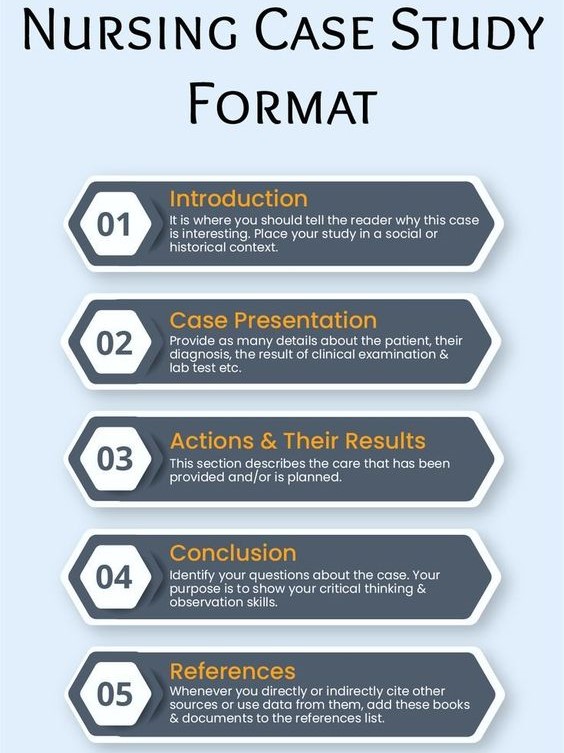
- Use clear headings and subheadings: Organize the content into logical sections to improve readability and understanding.
- Include tables, charts, and figures: Utilize visual aids to present complex data in an easily digestible format.
- Follow a consistent referencing style: Use a recognized referencing style (e.g., APA, MLA) to ensure proper citation of sources.
- Proofread meticulously: Thoroughly proofread your work for grammar, punctuation, and spelling errors.
The Importance of Peer Review:
Sharing your nursing case study with peers for feedback can greatly enhance its quality.
- Ask for constructive criticism: Encourage peers to offer honest feedback on the content, clarity, and organization of your nursing case study.
- Seek feedback on the overall impact: Ask peers if your nursing case study effectively conveyed the patient’s experience, the challenges faced, and the lessons learned.
Common Pitfalls in Writing Nursing Case Studies
1. Lack of Clear Focus and Purpose:
- Pitfall: The case study lacks a clear central question or problem to be addressed. This makes it difficult for the reader to understand the purpose of the study and its relevance.
- Solution: Begin by defining a clear research question or hypothesis that the case study aims to answer or prove. State the purpose of the study and what it hopes to contribute to nursing knowledge or practice.
2. Poorly Developed Case:
- Pitfall: The case study lacks sufficient detail about the patient, their condition, and the nursing interventions used. This makes it difficult for the reader to understand the context and relevance of the case.
- Pitfall: The case study is overly simplistic or lacks complexity, making it unrealistic and lacking in learning potential.
- Solution: Provide a comprehensive description of the patient’s medical history, symptoms, and relevant social determinants of health. Include details about the nursing interventions implemented, the patient’s response, and any unexpected outcomes. Include realistic challenges and complexities faced by the patient and the healthcare team.
3. Insufficient Analysis and Discussion:
- Pitfall: The case study lacks a thorough analysis of the case, the nursing interventions used, and the patient’s response. This makes it difficult for the reader to learn from the case study and apply the lessons learned to their own practice.
- Solution: Analyze the case using relevant nursing theories, models, and frameworks. Discuss the rationale for the interventions used and their effectiveness. Include critical analysis of the patient’s response to the interventions and explore potential areas for improvement.
4. Lack of Ethical Considerations:
- Pitfall: The case study fails to address ethical considerations related to patient confidentiality, informed consent, and the use of personal health information.
- Solution: Ensure patient privacy and confidentiality are protected by using pseudonyms and omitting identifying information. Obtain informed consent from the patient or their family if the case study involves sharing sensitive information. Reflect on the ethical implications of the case study and discuss any potential conflicts or challenges.
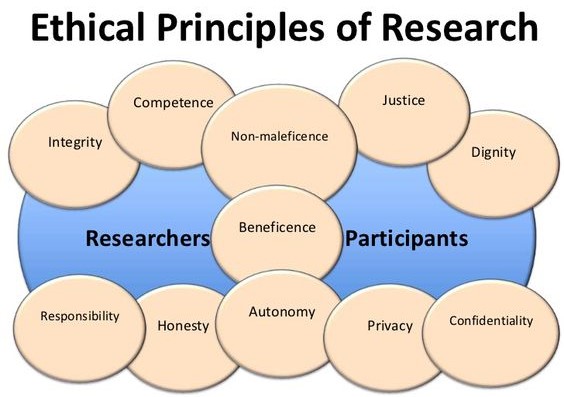
5. Poor Writing Style and Structure:
- Pitfall: The case study is poorly written, lacks clarity, and is difficult to understand. It may be poorly organized, lack proper grammar, or be written in a non-professional tone.
- Solution: Employ clear, concise, and professional language. Use headings and subheadings to structure the case study logically and improve readability. Ensure the study is free of grammatical errors and adheres to academic writing standards.
6. Limited Use of Resources:
- Pitfall: The case study lacks proper citations and references to support the claims made and demonstrate the use of relevant nursing literature.
- Solution: Utilize relevant nursing literature and research findings to support the case study’s analysis and discussion. Cite all sources accurately and consistently using a recognized referencing style.
7. Lack of Relevance to Nursing Practice:
- Pitfall: The case study lacks relevance to the current nursing practice and fails to address real-world nursing challenges and issues.
- Solution: Select a case that reflects common nursing situations and challenges faced by nurses in practice. Focus on practical applications and ensure the case study has implications for improving patient care and nursing practice.
8. Limited Educational Value:
- Pitfall: The case study fails to provide valuable insights and lessons that can be applied to other clinical situations. This makes it less effective as an educational tool for nurses.
- Solution: Identify key takeaways and learning points from the case study. Discuss how the lessons learned can be applied to similar clinical scenarios and contribute to improved nursing practice. Encourage reflection and critical thinking about the case study’s implications.
By addressing these common pitfalls, writers can create strong and effective nursing case studies that are valuable resources for learning and professional development.
Utilizing the Nursing Case Study for Professional Growth
The nursing case study is not merely an academic assignment. It can be a valuable tool for professional development and reflection.

- Analyze your own practice: Use the nursing case study to analyze your own decision-making process, identifying areas for improvement.
- Share your findings with colleagues: Contribute to a culture of learning and shared knowledge by sharing your nursing case study with colleagues.
- Engage in professional development: Use the nursing case study as a springboard for further professional development, exploring new research or attending relevant conferences.
Crafting a compelling nursing case study requires a blend of knowledge, critical thinking, and effective communication. By following these strategies, you can develop a nursing case study that is not only academically sound but also engaging, informative, and impactful. Remember, the ultimate goal of the case study is to contribute to the advancement of nursing practice, promote patient-centered care, and enhance the learning experience for all involved.
Professional Nursing Case Study Writing Help
Are you stuck with a nursing case study assignment? Then, engage Nursing Papers for professional nursing case study writing help. We can help you with choosing a compelling case study, writing the assignment, proof reading and editing, and plagiarism check and removal. Besides case studies, our customized writing service also covers nursing research papers, essays and dissertations.






